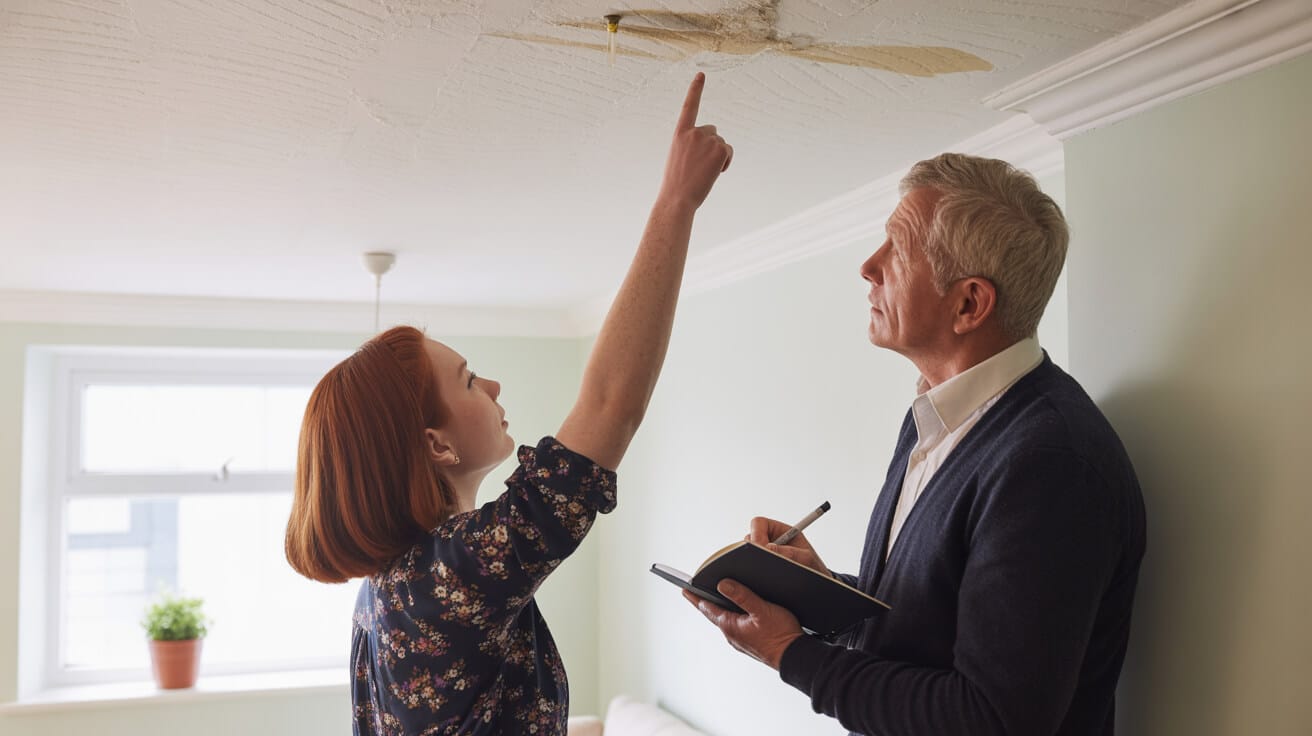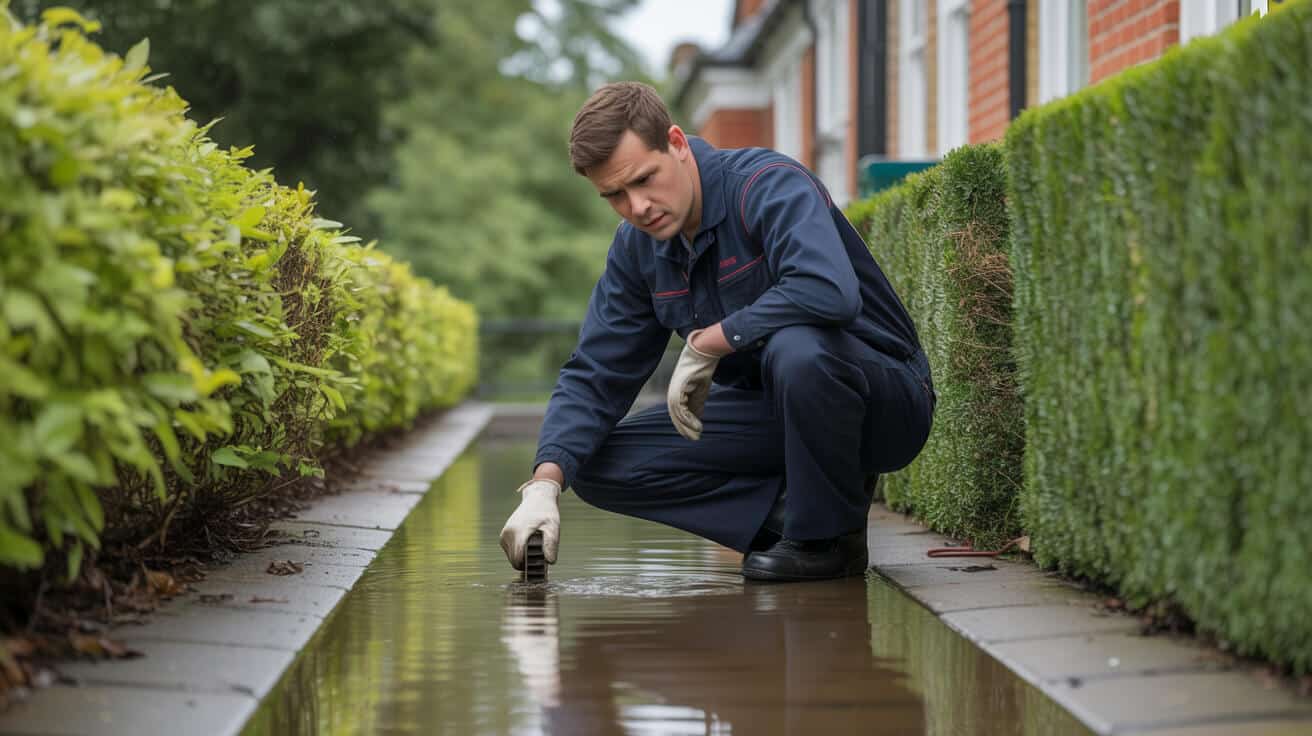 What Can’t You Flush Down a Toilet
What Can’t You Flush Down a Toilet
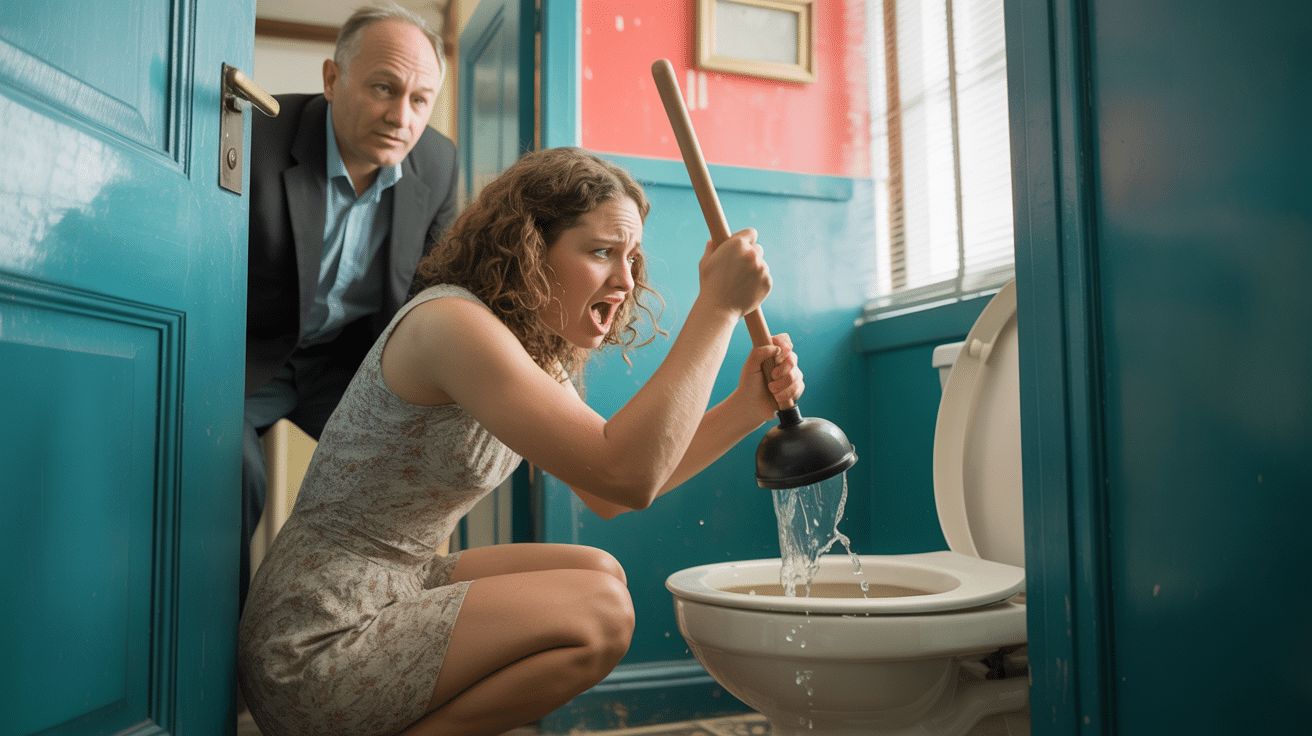
Why Do So Many UK Homes Get Caught Out by Flushing the Wrong Thing?
It always sounds like someone else’s plumbing problem—until your own place, organisation, or rental flat is the one with a rising pan and a four-figure repair bill. The reason so many property owners, managers, and tenants keep making the same flushing mistakes isn’t ignorance. It’s misplaced trust in “flushable” branding plus a half-century of hope that out of sight means out of mind. But UK pipes don’t forgive. A single absorbent wipe or tangled stray cotton bud can jam up a system from Victorian terraced houses to new-builds with the sleekest fixtures.
Every flush is a vote: do you want flow or do you want trouble?
The reality is, the bulk of major toilet and drainage disasters begin with “just this once”—a moment’s shortcut that can cost days of disruption, angry phone calls, and insurance refusals later on. If you’re a landlord, local authority, or commercial facilities manager, you already know: tenants and cleaning teams won’t always own up when something “disappears.” Your job? Stay sharp to risks, instal easy deterrents, and separate branding fairy-tales from how drains actually work.
How Did “Flushable” Get So Misleading?
Let’s break the trust illusion. The UK lacks a legally enforced standard for what makes a product “flushable.” Marketing lingo changed overnight, but the pipes never did. Companies have stuck “flushable” labels on wipes, cleaning pads, dental floss—even the odd facial tissue—knowing full well those items pass the toilet’s S-bend but block 47,000+ drains a year in the UK (Water UK, 2024). Add to that a rise in biodegradable branding and so-called septic-friendly options, and it’s no wonder property professionals are left chasing their own tails—and escalating “fatberg” clean-up costs.
Flushable in the real world means “likely to cause you or your insurance company a headache down the line.” No engineer, utility, or claims handler is buying the branding any more.
What Actually Leaves the Toilet Safely?
Here’s the simple mantra: The 3 Ps—pee, poo, and (toilet) paper. If it’s not directly a body product or genuine loo roll, make the bin the final stop… not your pipes.
Do “Flushable” Wipes and Other Products Really Break Down—Or Are We Being Sold a Blockage?
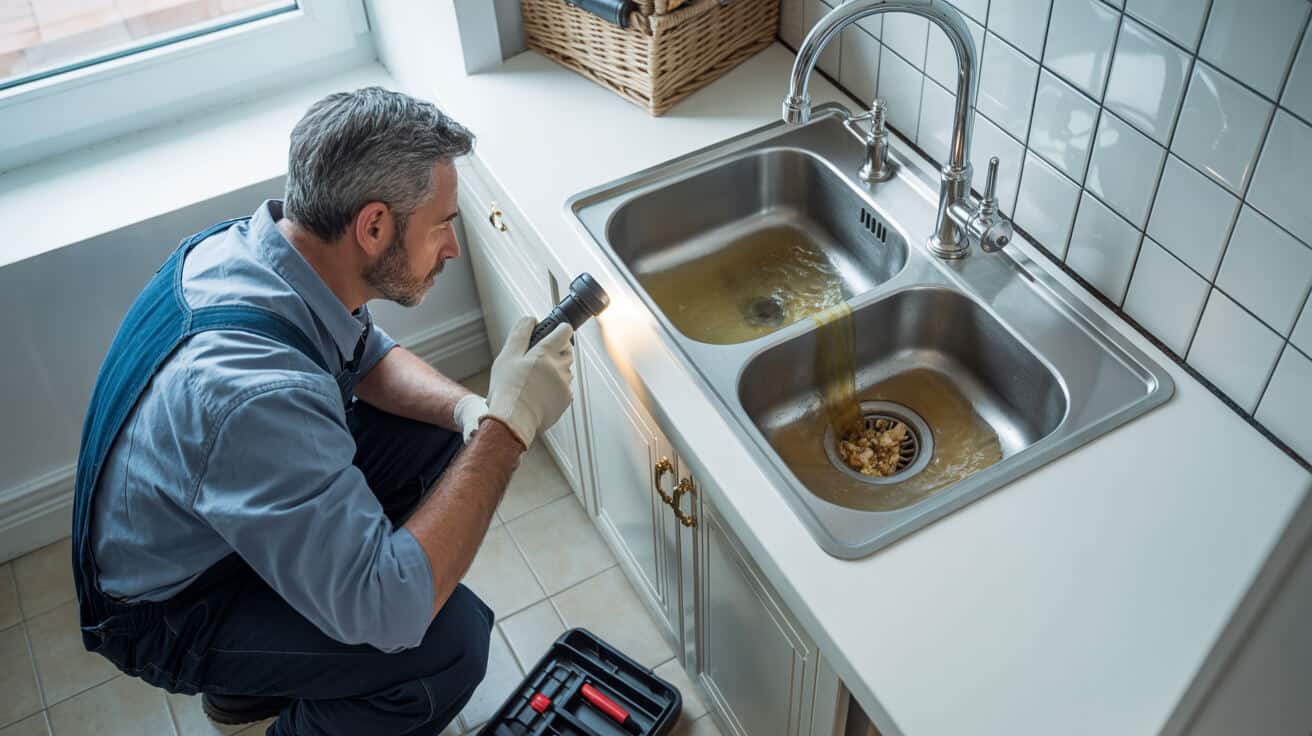
Let’s get straight to it: Flushable wipes, pads, and most so-called eco-alternatives do not break down anywhere near quickly enough to keep drains safe. Plumbing pros, utilities, and consumer advocates all warn about it, and the numbers back them up.
Wipes that claim to vanish are just prepping tomorrow’s blockage.
The Persistence Problem
- Wipes: (baby, “flushable,” cleaning): Stay intact for days. Plungers and chemicals only move them further into the pipe, not out into the sewer.
- Cotton products and dental floss: Entangle into fibre nets deep inside bends, trapping hair and fat as they grow.
- Paper towels, kitchen roll, and tissues: Absorbent by design, tougher than toilet paper. Instead of breaking down, they expand and create dense plugs.
Recent testing by Water UK found 90% of all blockages they attended in 2023 contained wipes, regardless of the “flushable” stamp (Water UK, 2024). The “Fine to Flush” certification, meant to guarantee breakdown by the time waste hit communal pipes, was pulled because hardly any brands actually met the mark on breakdown speed or fibre strength.
Why “Biodegradable” Isn’t Enough
Biodegradable doesn’t mean rapid disintegration. Many so-called earth-friendly wipes will physically hold together in running water for days. A pipe system only works if everything breaks up within seconds—not months.
And in multi-storey buildings or streets with old pipes, a single item that “lingers” increases the odds of a shared backup, disputed insurance claim, or emergency call-out everyone remembers for the wrong reasons.
Exactly What Should NEVER Go Down Your Toilet? The Engineer’s Ban List
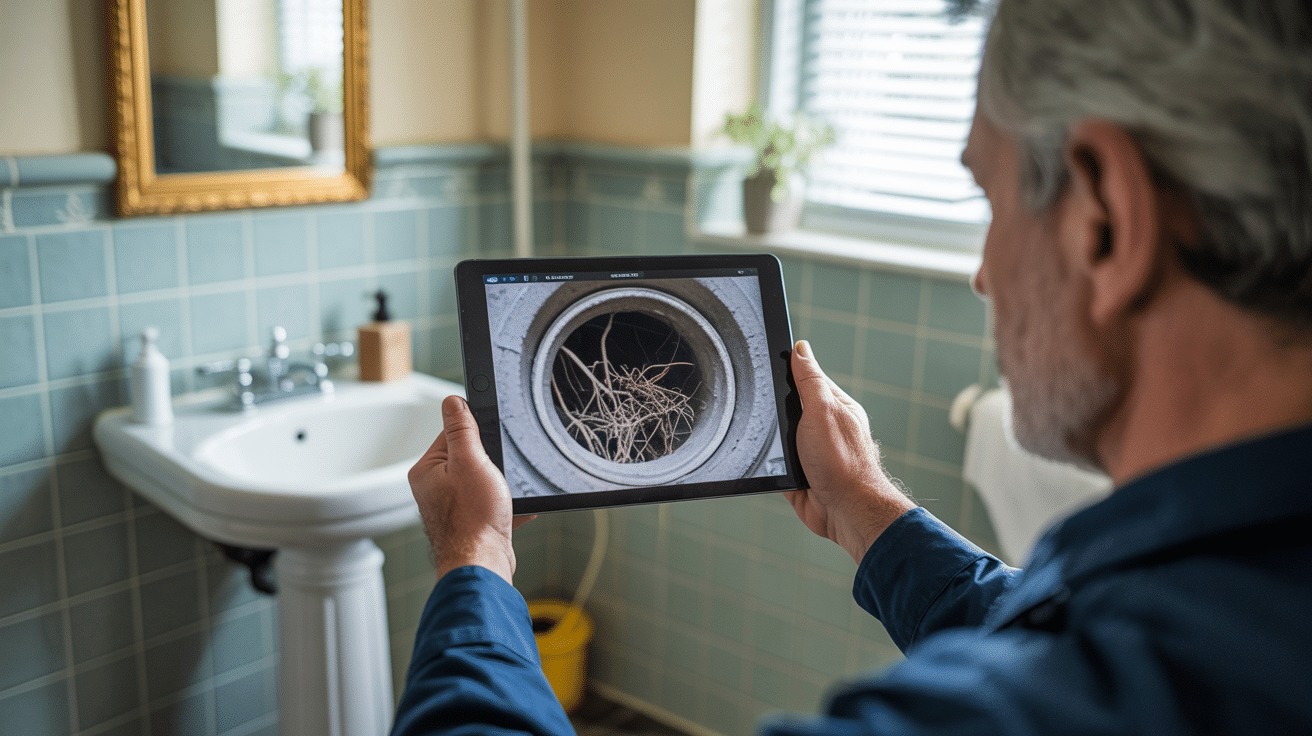
If you manage a property, handle lets, or just want to avoid future disputes with tenants, staff, or family, save yourself the detective work. Here’s the definitive no-flush list from a senior plumber with decades on Britain’s pipes:
Non-Negotiable No-Flush Items
- Wet wipes: All types—baby, cosmetic, “flushable,” cleaning.
- Sanitary products: Pads, tampons, liners, applicators (even the “thin” ones).
- Cotton buds / balls / make-up pads: Don’t dissolve and get snagged on bends.
- Paper towels, kitchen roll, facial tissues: Too strong, too absorbent, and they hold water before jamming pipes solid.
- Dental floss, hair, thread: Weave fibre nets that catch bigger debris.
- Nappies, incontinence pads/wipes: Swell, jam, and can block even the widest U-bend.
- Plasters, bandages, Q-tips: Small but mighty block-makers.
- Food, cooking oil, fat: Combine with fibres to create “fatbergs”—biggest city and apartment block threat.
- Plastic, blister packs, wrappers, condoms: Never break down, ever.
- Medicines, needles, sharp items: Pollute water, risk injury.
If it isn’t pee, poo, or *proper* toilet paper—bag it, and bin it. Let your pipes flow, not your stress.
This clarity matters for liability. Being able to truthfully say you taught tenants/staff the “no flush list” is now a duty—not just best practice.
How Do These Wrong Items Actually Wreck UK Pipes, Drains, and Buildings?
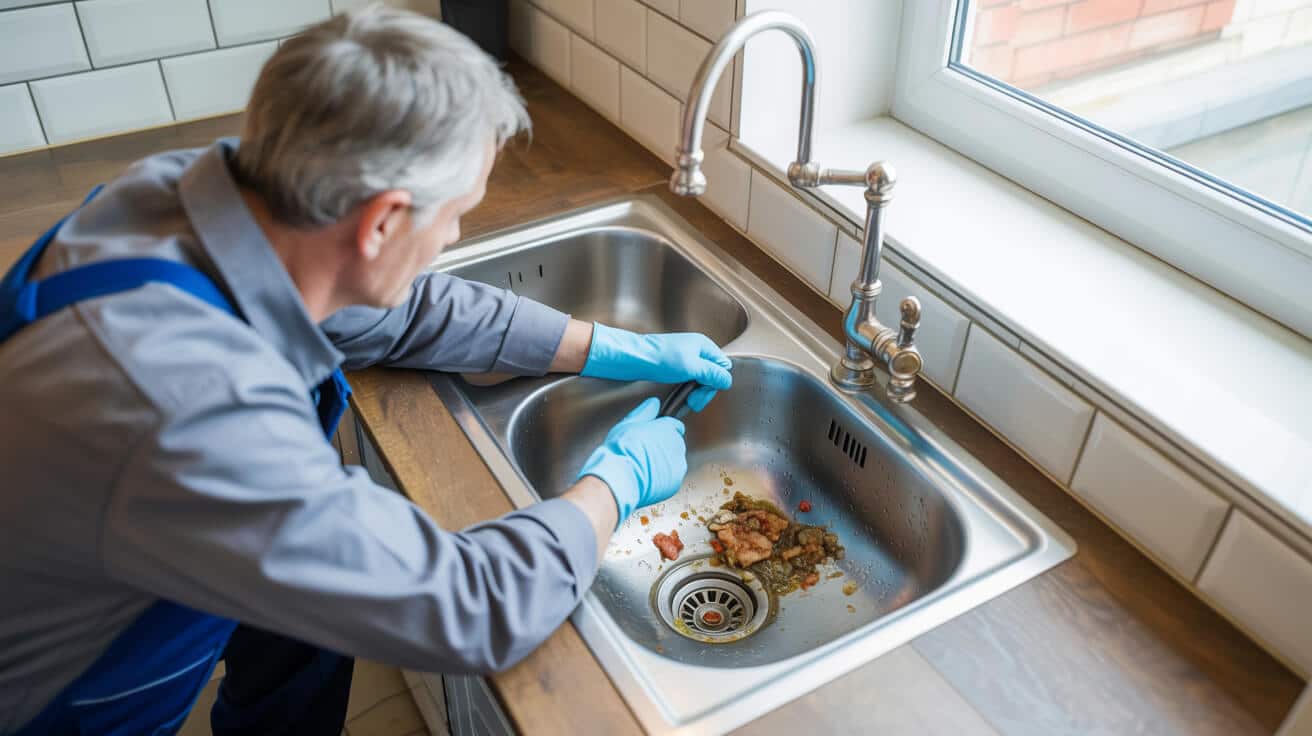
It’s never instant—plumbing failures hide, grow, and then suddenly explode. So what’s going on below the floor or at the bottom of the garden, out of sight and costing you dearly?
The Science Under the Lid
- Modern blockages are multi-material: It’s rarely just wipes—a single pan combines stickier, more absorbent debris with hair, tiny plastics, and fat over weeks. These knot together and coat pipes with a sticky “rag soup”.
- Shared stack blindness: Multi-storey buildings build up silent partial blockages for months. By the time toilets or showers slow, the packed sludge sits metres away—out of reach for rods and most chemicals.
- Recurrent damage: Lining repairs, partial clears, and “quick jet” solutions often leave critical patches behind, so blockages return faster and insurance classifies it as *repeat misuse*—not accident.
Early signs—slow drains, gurgles, bad smells—are your only warning. Ignore them and you’re usually moving from a £120 rod-out to a multi-day, multi-tenant, “dig out the stack” job. And in flats? Expect arguments about who’s to blame, who warned who, and what proves innocence.
What Happens When It’s Not Fixed?
Persisting means:
- Toilets overflowing or refusing to flush, in peak periods with most witnesses
- Ground floor flats or commercial loos soaking up neighbours’ waste as water backs up
- Repairs that drill through floors, rip out boxing, and sometimes wreck newly-refurbished bathrooms—all avoidable
If you run a portfolio of properties, every ignored warning can cost you both rent and your reputation as the “safe” landlord.
Who Pays For Flushing the Wrong Things—and Why Does Insurance Usually Say “No”?
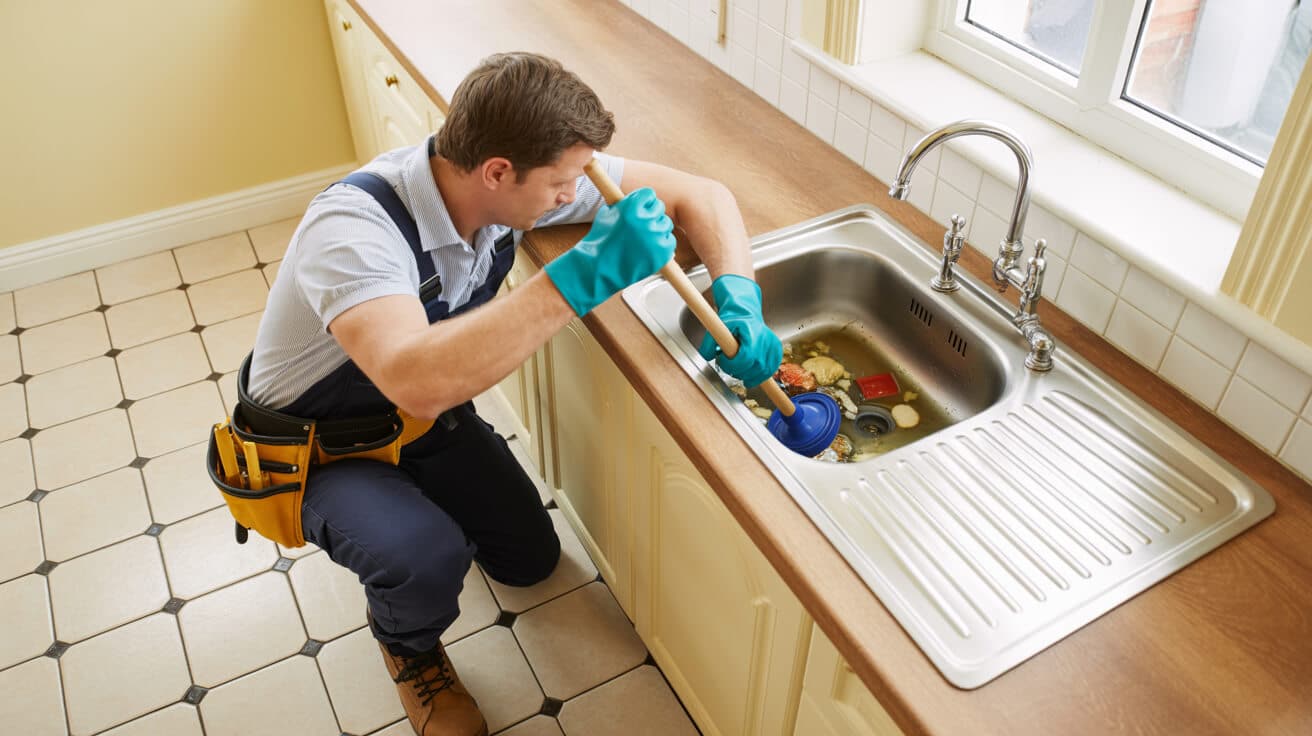
Most clients don’t realise that insurance is clear: if you or your tenants contribute to a blockage, you wear the cost.
Wipes may vanish in a flush, but their true bill lands as a call-out, not a warranty.
Cost Breakdown
- Standard drain clearances: £80–£250 for a pro rod/jet (Checkatrade, 2024). Excavation or trying to reach stack traps? Triple it.
- Pipe or stack replacement: Four-figure jobs are common, especially in conversion flats or older housing stock.
- Claims exclusions: Most cover excludes “misuse, inappropriate disposal, or repeated incidents.” Fail to prove you did your bit warning users, and claims for water damage, repairs, or even tenant compensation are denied.
- Block or communal repairs: Landlords/agents on multi-unit schemes can be “jointly and severally” liable. That means one person’s “harmless” flush becomes everyone’s burden, fast.
If you’re not actively educating tenants and posting clear signage or providing bins, you’re exposed. Section 11 (Landlord & Tenant Act 1985) explicitly demands landlords protect against “avoidable waste and damage.” Ignore it, and you risk not just the repair bill, but legal action or loss of cover.
Why Did “Flushable” and Past UK Standards Fail? What Should Decision-Makers Know in 2024?
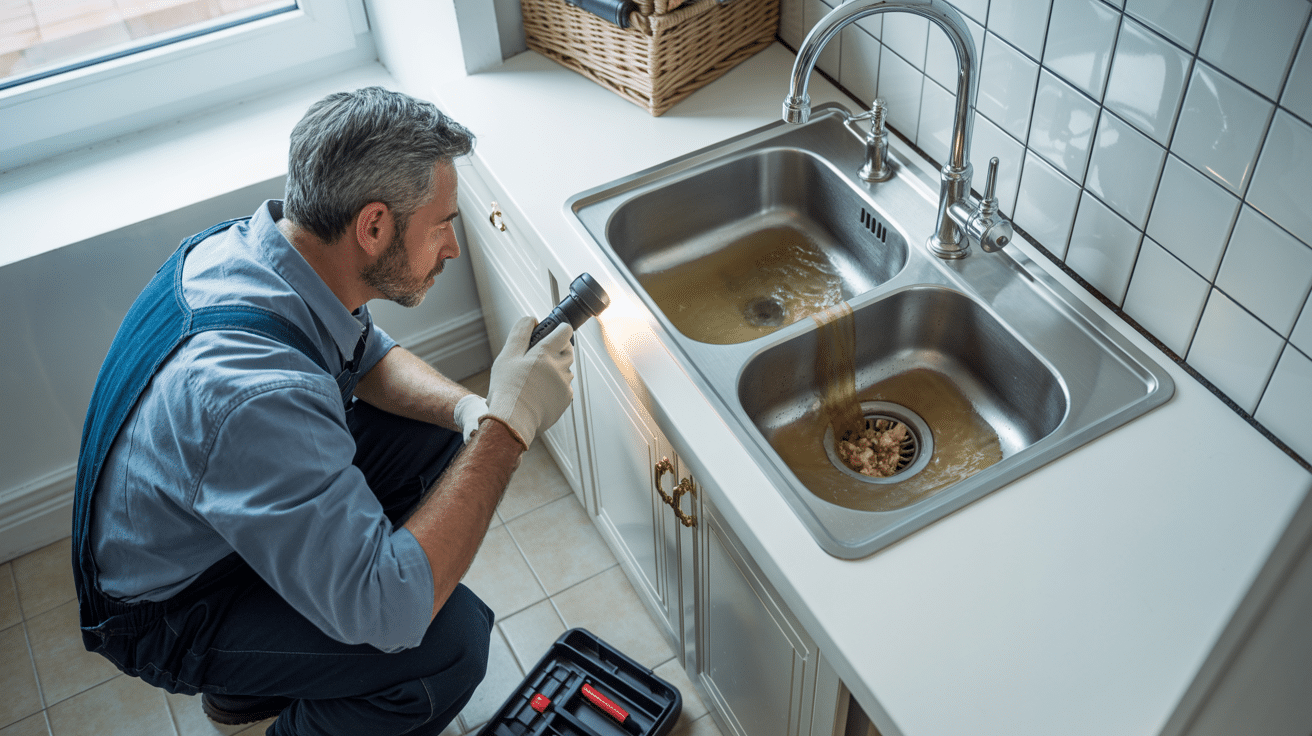
There’s a reason even top UK water engineers tell their own families: “3 Ps only.” Until last year, you might have trusted packaging with “Fine to Flush” as a beacon of certainty. Not any longer.
Flushable means nothing when the pipes stay stubborn.
The “Fine to Flush” standard, once intended to reassure buyers and satisfy claims adjusters, was quietly shelved in 2024. Water UK data showed over 90% of blockages still featured so-called flushables bearing a logo that was meant to mean safe (Water UK, 2024). Independent lab and field testing confirmed most products, even if they eventually degrade in lab conditions, stay structurally sound miles past the U-bend—well into communal stacks and public sewers.
Current reality:
- No wipes meet any credible UK “flushability” standard as of 2024.
- Properties, managing agents, and even social landlords are now judged by actions—signage, advice, bin placement—not by what packaging claims.
If you want to protect both your property and your reputation, future-proof yourself by making “3Ps only” your official, documented policy. Brands won’t argue with an engineer’s invoice.
What Works: Stepwise Habits to Stop a Blockage—and Avoid Regrets
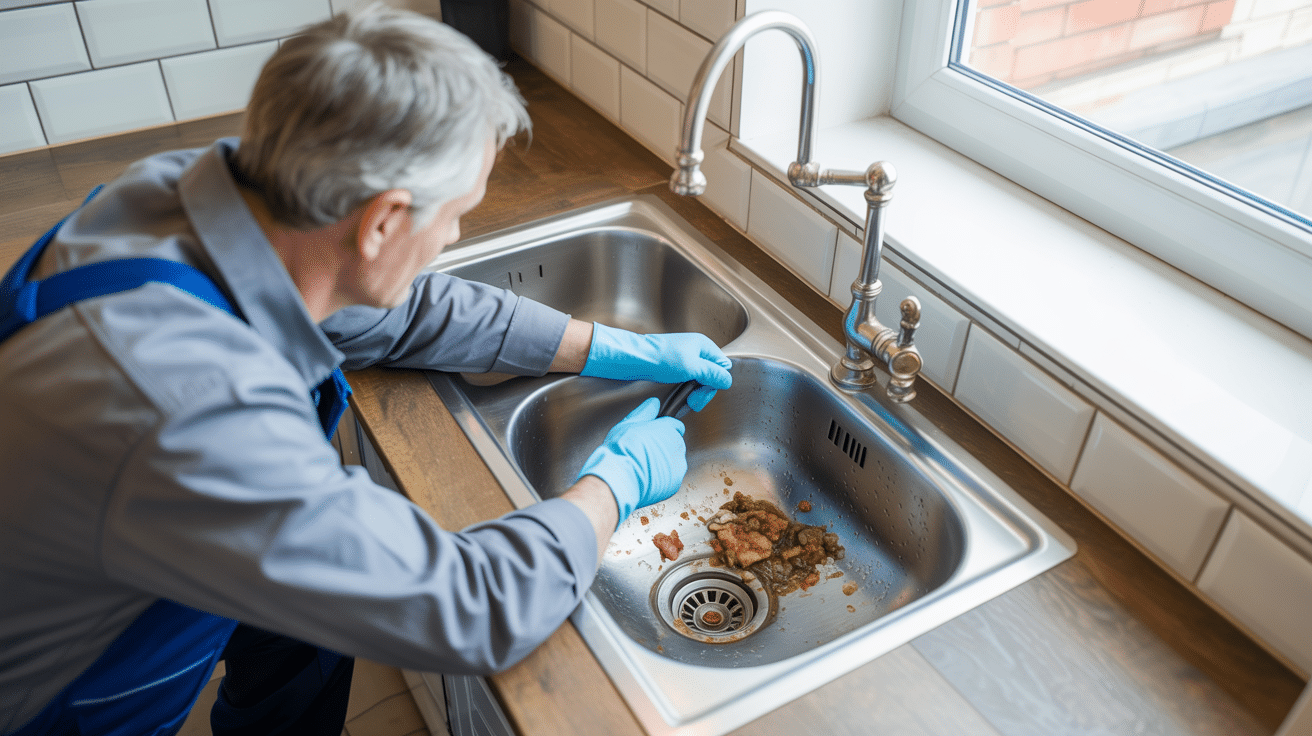
This isn’t about nagging, it’s about shifting risk off your property and out of your budget. The best defences are not expensive gadgets or “miracle” chemicals, but simple, well-documented habits.
1. The Bin Defence
Instal a bin by every toilet and point-of-use washbasin. Not in a cupboard—not labelled “ladies only”—but visible, easy, and clearly marked in plain language (“Everything but 3Ps goes here”).
2. Polite Signage, Not Scare-Tactics
Display simple “3Ps only” signage in bathrooms and WCs. Many local water providers and WaterSafe offer free PDF templates. Polite works better than threatening; avoid passive-aggressive posters.
3. Swift Reaction to Early Signs
- Notice slow drainage, bubbling, or odours?: Call for a CCTV drain survey before a full backup. The cost is minor compared to major plumbing repairs and insurance-denied damage claims.
4. Educate and Remind
- Hand out printed advice: New tenants, cleaners, and staff. Reinforce “what not to flush” at lease sign, onboarding, and annual reviews.
- Send short email tips/bulletins after callouts: to show proactive management—a key insurance lever now.
5. Keep All Repair and Blockage Documentation
- Save all invoices, CCTV reports, and unblocking logs.: This “paper trail” backs up compliance, mitigates disputes, and smooths the path for insurance/comp claims if disaster strikes.
What’s the Ripple Effect of Good Habits?
Ready, visible reminders do more to stop blockages than any chemical ever marketed. And when property managers, local authorities, and homeowners give users dignity, not blame, you’ll discover people want to protect the pipes too.
Are There Legal, Compliance, or Financial Penalties for Flushing the Wrong Stuff?

This isn’t just an “annoying building rule.” The UK’s Water Industry Act 1991 and Environmental Protection Act 1990 forbid putting anything into drains “likely to cause interference.” Fines go to property owners, not tenants.
Owner/Manager Responsibility
- You’re on the hook: for direct repairs from regional water authorities if blockages trace to your building’s pipes or private stack.
- Repeat offences or negligence in signage/bin provision can land managing agents, property managers, or businesses with direct fines or regulatory action—not just repair bills ([Aqua Mundus](https://www.aquamundus.com/about/legislation.aspx?utm_source=openai)).
- Insurance adjusters are now trained to spot properties with no visible compliance steps.: Failure to educate users and provide proper disposal means almost automatic payout refusals, especially for repeat events.
Letting/Managing Agents and Duty of Care
You’re no longer just a “go-between.” Agents must:
- Document tenant handovers and written guidance.:
- Instal and maintain correct bins, signage, and facilities: —just one “it’s not our job” email tripped up a London block’s letting agent in a 2023 insurance dispute.
- Demonstrate routine education/reminder cycles.: Ignorance isn’t a valid excuse for either side.
The new normal means owners and managers who can’t show active risk reduction expose themselves—and their insurers—to four-figure denied claims and even civil liability.
How Can You Spot Hidden Warning Signs and Resolve Small Problems Before They Turn Disastrous?
Overflowing or blocked toilets grab headlines, but most expensive repairs are months in the making. The best property managers and landlords know how to decode the early signals that spell disaster.
Typical Early Red Flags
- Slow outgoing water in toilets, basins, showers, or baths.:
- Gurgling or bubbling noises after flushes or while other taps run.:
- Unpleasant odours, especially around floor-level drains or in older conversions.:
- Mysterious “damp” or water stains, especially after periods of non-use (overnight, holidays).:
Smart Steps to Stay Out of Trouble
- Book a pro drain survey with CCTV if any sign persists—especially after turnover, big groups, or changes.:
- Log all repair and unblock visits.: Keeping paper or digital receipts is now a must; it’s the first thing insurers or liability auditors ask for during claims.
- Loop in neighbours and anyone with shared use: Catching issues before backup or overflow stops disputes and lets everyone split costs/kudos.
Where others panic, prepared homeowners and managers have paper trails—and can prove their diligence.
Routine checks nip problems in the bud, transforming a potential £2,000 stack work into a simple £120 unblock and a relieved insurance adjuster.
Safeguarding Your Property—and Budget—With Plumbers 4U
Small fixes and daily discipline guarantee far fewer plumbing nightmares.
Every kind of building—detached, flat, care home, shop, or office—carries the same baseline plumbing risk: one person’s shortcut becomes everyone’s expense if you don’t adopt simple, compliant habits and verify your infrastructure. Plumbers 4U sets the gold standard for prevention and professional response in the UK:
- All inspections and repairs to WRAS and WaterSafe standards—no cutting corners, ever.:
- Engineers who explain what they’re doing and provide photo logs for every job.:
- Transparent, line‑itemed quotes—no scope creep, no jargon—so you always know real costs.:
- Repairs logged and handed over with maintenance checklists—perfect for landlords and local authorities.:
- Free flush guides, signage, and checklists for tenants, cleaners, and staff—supporting you in fulfilling Section 11 ‘best practice’ expectations.:
- No upselling, no blame—just clear, stepwise logic backed by decades on the tools.:
Is it worth risking a four-figure repair bill, angry tenants, or a denied claim? Or would you rather a five-minute call, a clear answer, and a system that flows, year after year?
Don’t settle for hope or “maybe it’s fine.” Call Plumbers 4U now for a check, unblock, compliance review, or your free, print-ready flushing guide—so the only thing making a splash is your peace of mind.
Frequently Asked Questions
Why are “flushable” wipes, hygiene items, and cottons still blocking UK pipes despite brands’ promises?
“Flushable” wipes, pads, and cotton goods frequently block UK plumbing because they fail to disintegrate like toilet paper and instead accumulate at bends, in joints, and on rough surfaces—regardless of what packaging claims.
Toilet paper is purpose-built to fall apart within seconds of contact with water. In contrast, “flushable” wipes and hygiene products are engineered for strength and moisture resilience. In real UK drains—especially older pipework—these items can linger, catch on imperfections, and mix with fats and debris that build progressively larger clogs. Water UK (2023) revealed that more than 90% of home blockages include wipes or hygiene materials, and the UK’s only independent “flushable” testing scheme was quietly abandoned in 2024. With no formal accreditation, even so-called “flushable” items persist long after they’re out of sight.
It only takes one wipe to start an invisible chain reaction, leading to a blockage days, weeks, or months down the line.
Domestic pipe runs in the UK tend to be narrower and more complex compared to some international systems, making them especially susceptible. While many people trust marketing claims, neither wipes nor cotton pads break down under pressure or agitation like proper toilet tissue. If something is absorbent, fibrous, or designed for durability (including makeup pads, moist toilet tissue, or classic cotton buds), it belongs in a bin, not your drains.
How do “flushable” wipes compare to regular toilet paper?
• Toilet paper fully dissolves in under a minute and leaves no residue behind.
• Wipes, facial pads, and sanitary items remain intact even after hours submerged.
• Absorbent materials can swell in pipes and resist breakdown, amplifying clog risk over time.
Unless it’s urine, faeces, or official toilet paper, avoid “flushing and forgetting”—future you (and possibly your neighbours) will thank you.
How does an innocent flush of a wipe or pad spiral into a costly plumbing problem?
The damage from flushing non-dissolvable items is rarely immediate, quietly escalating from slow drainage to disastrous blockages that demand urgent, often invasive repairs.
After entering your drain, a wipe or pad may snag on a corroded joint or sharp bend, starting a sticky anchor point inside the pipe. These products don’t dissolve—they capture other waste, fats, and hair, so the internal diameter of the pipe begins to shrink. What starts with slow drainage or faint noise rapidly progresses: water rises dangerously close to the toilet rim, gurgling emerges from nearby sinks, and sudden overflow or backflow can force waste into bathrooms or cause leaks behind walls.
I’ve always flushed wipes is a phrase plumbers hear most right before a major blockage callout.
Complex dwellings—blocks of flats, Victorian terraces, or shared stacks—are especially exposed: problems at one flat can quickly cascade, causing communal repairs, higher insurance premiums, and souring neighbour relations. If the blockage extends to the main stack, repair costs and disruption multiply, sometimes implicating everyone upstream of the original error.
What early clues suggest a hidden blockage is building up?
• Water rises higher in the bowl or drains sluggishly after a flush
• Bubbling in basins, baths, or WCs—particularly after heavy use
• Persistent, low-level odours emerging near pipe access or stack vents
• Gurgling sounds when other fixtures use water
Addressing these signs early, with clear records, helps landlords, homeowners, and managers resolve issues quickly and keeps costs—and disruption—low.
What happens once non-flushable items pass beyond your property’s own pipes?
Wipes, pads, and cottons flushed into the UK sewage network don’t simply “disappear”—they join hundreds of thousands of similar items each week, combining with fats and cooking oils to form immense fatbergs that choke public sewers, flood streets, and damage homes.
In 2023, UK water utilities logged over 300,000 blockages caused by sanitary or “flushable” items, with repairs and clean-up costs topping £100 million every year. A blockage that seems trivial leaving your flat can return as a building-wide surcharge, a denied insurance claim, or a council bill after sewer teams trace the cause using CCTV surveys.
The aftermath of one forgotten flush can ripple outwards, costing an entire street or block thousands in repairs—and creating environmental fallout for years.
Fatbergs don’t just threaten buildings; they break down into persistent microplastics, contaminating local waterways, damaging ecosystems, and eventually returning through the water supply. Enforcement is tightening: when councils and water authorities identify problem sources, they’re increasingly billing the property or building where the blockage originated, no matter how much time has passed.
Major consequences when these items hit public sewers
• Emergency closure of roads and buildings to clear severe blockages
• Disruptions for shops, homes, and essential services—even hospitals
• Long repair times: severe blockages can take days or weeks to fully clear and may necessitate digging up pipes
• Fines or recharge invoices for communal buildings—liability often split between all leaseholders
Clear, cautious flush habits protect not just your drains, but the whole community and environment downstream.
What are the legal and insurance consequences of flushing the wrong items, and who gets the bill when things go wrong?
UK law strictly prohibits flushing anything liable to interfere with drainage, pollute water supplies, or trigger environmental harm—including all wipes, sanitary products, and non-paper cottons (Water Industry Act 1991, Environmental Protection Act 1990).
For property owners, landlords, managing agents, and even business operators, compliance now requires active measures—not just good intentions. Insurers regularly exclude claims for water damage or flooding traced to “misuse” of the drains: that includes hygiene wipes, pads, and any non-dissolving waste item revealed by a survey.
Letting contracts, social housing codes, and most owner leases require:
• Lidded bins and “three P’s” signage beside each WC (pee, poo, toilet paper only)
• Written rules on proper flushing, with evidence of guidance given at move-in or renewal
• Proof of bin provision and tenant education, stored in maintenance or compliance files
No record of bins or signage is grounds to deny cover—or to bill every resident jointly for repairs and municipal fines.
Post-blockage, property managers or owners must present maintenance logs, photo evidence, and plumber documentation to defend insurance claims or prove active prevention to the council. Shared buildings face “joint and several liability”—meaning everyone shoulders the cost if the source is not clearly documented, and tenants or agents lacking written instructions often find themselves footing the bill.
What proactive steps help ensure coverage and compliance?
• Provide and photograph bins, signs, and no-flush guides at each tenancy
• Log all repairs, inspections, and preventive actions with dates and images
• Request CCTV survey footage and reports—especially after blockages or upgrades
• Keep all records easily accessible for property managers, agents, or insurance adjusters
Careless flushing endangers insurance, budgets, and even legal standing—while simple steps create a defensible chain of documentation.
How should you respond the moment you suspect a wipe or hygiene product has been flushed?
Decisive, informed action limits the escalation from accidental flush to expensive disaster—and protects your financial and legal interests.
First: observe. If water level rises, drainage slows, or gurgling is heard after a flush, halt all further use of the toilet and nearby fixtures. Notify anyone in the property to pause use as well. Avoid over-the-counter chemical drain openers; they’re almost always ineffective on wipes or sanitary products and can worsen the situation by pushing soft blockages further along.
Call a qualified, WRAS-approved plumber—teams like Plumbers 4U are specifically trained to use CCTV diagnostics and targeted clearing methods. Document everything: take photos or videos of symptoms, bin locations, and warning signs. Save plumber invoices and all communication as a robust record for letting agents or insurers.
Acting quickly doesn’t just save your plumbing—it’s the difference between a claim being honoured or denied.
For communal or managed properties, inform management immediately and forward all photo evidence. Post “no wipes/pads” reminders to prevent repeat incidents. Advanced blockages may require rodding, jetting, or even pipe replacement; costs rise fast unless you show thorough, prompt intervention.
Rapid-action checklist for suspected blockages
• Stop using affected fixtures as soon as symptoms appear
• Do not use drain chemicals or attempt DIY repairs on concealed pipes
• Arrange a CCTV assessment and specialist intervention via a certified plumber
• Document every action taken, with images, invoices, and emails
• Communicate all steps to property stakeholders, management, or insurers
Quick, well-recorded intervention preserves peace of mind and prevents minor mishaps from turning into major repairs.
Which prevention habits and property upgrades—backed by Plumbers 4U—keep your drains clear and your documentation spotless?
Building in good habits and simple hardware upgrades not only avoids blockages, but also meets best practice for compliance, insurance, and long-term asset health.
Place a closed, lidded bin in every bathroom, cloakroom, and tenant access toilet; this is now standard for residential letting and commercial properties. Download or request “three P’s only” signage—most authorities offer free versions, or Plumbers 4U can supply custom, branded options.
Book an annual or post-tenant CCTV drain inspection—keeping clear imagery on file both for management and evidence. Ensure written sanitary disposal guidance is in every welcome pack, letting contract, or staff induction. Any repair, warning, or inspection should be photographed, with dates logged in a simple asset register.
A pattern of visible care is the strongest defence—proof your stakeholders, insurers, and tenants will trust.
Plumbers 4U also supplies bins, guides, and StreetSmart audit sheets, plus digital PDF checklists for instant compliance proof. WaterSafe-accredited engineers explain and document every intervention so you’re never left in the dark—just one more reason to outsource prevention, not just repair.
Don’t wait for plumbing trouble to put your reputation and finances at risk. Establishing clear rules, partnering with trusted experts, and tracing every step puts you ahead of the problem—and gives you documentation you can actually rely on.

